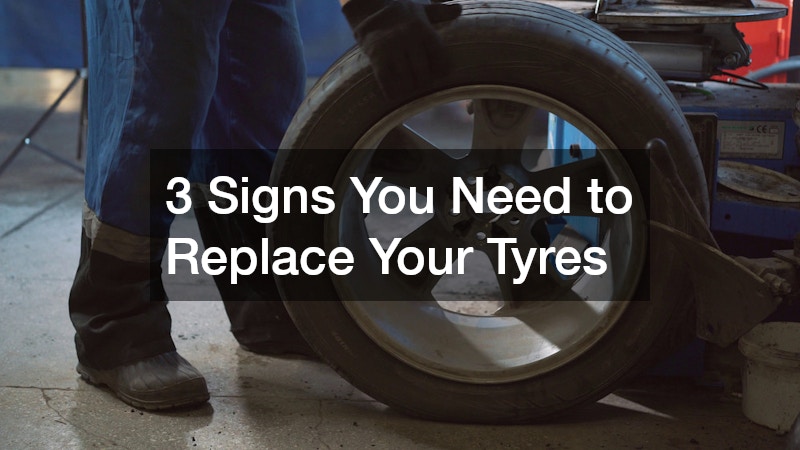Keeping your vehicle in good condition is essential for safety, performance and fuel efficiency. One often overlooked component is the tyres. They’re the only part of your car that makes direct contact with the road, so their condition can significantly impact how your vehicle handles and stops.
Worn or damaged tyres can increase your risk of accidents and reduce the overall efficiency of your car. Knowing when to replace them isn’t just about age or distance travelled. There are several clear signs to look out for that can help you determine when it’s time for a new set.
1. Tread Wear Is Below the Legal Limit
The tread on your tyres plays a critical role in maintaining grip, especially in wet or slippery conditions. In Australia, the legal minimum tread depth is 1.5 millimetres. Anything below this limit not only compromises your safety but also makes your vehicle unroadworthy. The easiest way to check tread depth is by using a tread depth gauge or looking at the tread wear indicators embedded within the grooves of the tyre.
If the tread is level with these indicators, your tyre has reached the end of its safe lifespan. Worn tread means your vehicle will take longer to stop in an emergency, and you’ll have less control during rain or on loose surfaces. Hydroplaning becomes a real risk, particularly at higher speeds. Even if only one or two tyres are below the minimum depth, it’s important to replace them immediately to maintain balanced handling and traction across the vehicle.
Regularly inspecting the tread can prevent you from driving on unsafe tyres. Rotate them every 10,000 kilometres and ensure they are correctly inflated to maximise their lifespan. Ignoring tread wear not only puts you at risk but can also lead to fines if you’re caught driving with bald tyres.
2. Cracks, Bulges or Deformities
Not all tyre damage is caused by driving long distances. Sometimes, physical damage to the rubber can occur due to potholes, hitting curbs or prolonged exposure to harsh weather conditions. Over time, these external factors can weaken the structural integrity of your tyres, even if they haven’t worn out their tread.
Cracks in the sidewall are a common warning sign that the rubber is drying out or degrading. This can lead to a sudden blowout while driving, which is particularly dangerous at high speeds. Similarly, bulges or blisters usually mean the internal frame of the tyre has been compromised. These spots are weak points where the rubber could give way without warning.
Deformities like these often go unnoticed unless you inspect the tyre closely. Make it a habit to visually check your tyres every few weeks, especially after driving over rough roads or debris. If you notice any unusual shapes, textures or changes in appearance, it’s best to have the tyre assessed by a professional. Driving on a compromised tyre can be more dangerous than driving on a worn one.
3. Excessive Vibration While Driving
Every vehicle experiences some level of vibration while driving, especially on uneven surfaces. However, if you start to notice an increase in vibration, especially through the steering wheel or floor, it might be a sign that something is wrong with your tyres. While not always the tyre itself, excessive vibration can indicate imbalanced wheels, misaligned suspension or internal tyre damage.
Tyres that are out of balance or have internal defects can create uneven contact with the road, leading to a bumpy ride. Over time, this not only affects your comfort but can also damage other components of the vehicle, including the suspension and steering systems. If you notice the vibration worsens at certain speeds or after hitting a pothole, have your tyres and wheel alignment checked as soon as possible.
Replacing your tyres at the right time is an essential part of vehicle maintenance and road safety. Worn tread, visible damage and unusual vibrations are three clear signs that should not be ignored. Even if your tyres still look relatively new, it’s important to assess their condition regularly, especially if you drive often or under challenging conditions.
Safety on the road starts with the parts of your car that touch it. By staying vigilant and replacing tyres when needed, you’re not only protecting yourself but also everyone else who shares the road with you. Regular inspections and a proactive approach to tyre maintenance can save you time, money and potential hazards in the long run.
.
